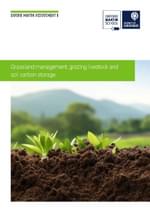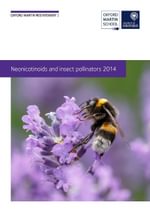Godfray HCJ, Stephens AEA, Jepson PD, Jobling S, Johnson AC, Matthiessen P, Sumpter JP, Tyler CR, McLean AR
Godfray HCJ, Stephens AEA, Jepson PD, Jobling S, Johnson AC, Matthiessen P, Sumpter JP, Tyler CR, McLean AR. 2019 A restatement of the natural science evidence base on the effects of endocrine disrupting chemicals on wildlife. Proc. R. Soc. B 286: 20182416. http://dx.doi.org/10.1098/rspb.2018.2416
View RestatementOxford Martin Restatements review the natural science evidence base underlying areas of current policy concern and controversy. Written in policy neutral terms and designed to be read by an informed but not technically specialist audience, restatements are produced by a writing team reflecting the breadth of opinion on the topic in the science community and involve wide consultation with interested stakeholders. The final version of the restatement is peer-reviewed prior to publication.
This paper was published in February 2019 in the Proceedings of the Royal Society B. It deals with the effects of endocrine disrupting chemicals on wildlife.
Endocrine disrupting chemicals (EDCs) are substances that alter the function of the endocrine system and consequently cause adverse effects to humans or wildlife. The release of particular EDCs into the environment has been shown to negatively affect certain wildlife populations and has led to restrictions on the use of some EDCs. Current chemical regulations aim to balance the industrial, agricultural and/or pharmaceutical benefits of using these substances with their demonstrated or potential harm to human health or the environment. A summary is provided of the natural science evidence base informing the regulation of chemicals released into the environment that may have endocrine disrupting effects on wildlife. This summary is in a format intended to be policy neutral and accessible to informed, but not expert, policymakers and stakeholders. Each evidence statement is placed into one of four categories describing the nature of the underlying information.





